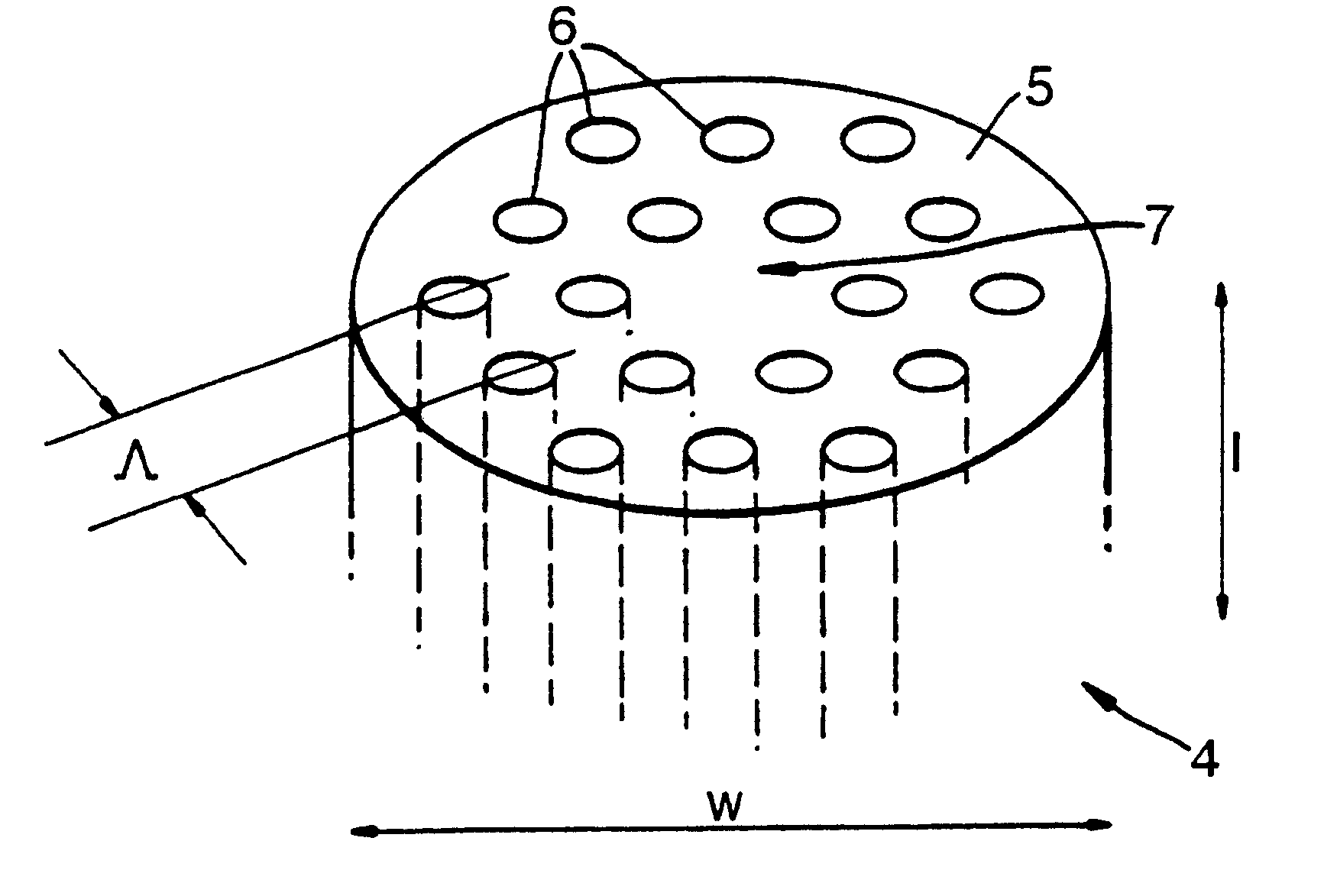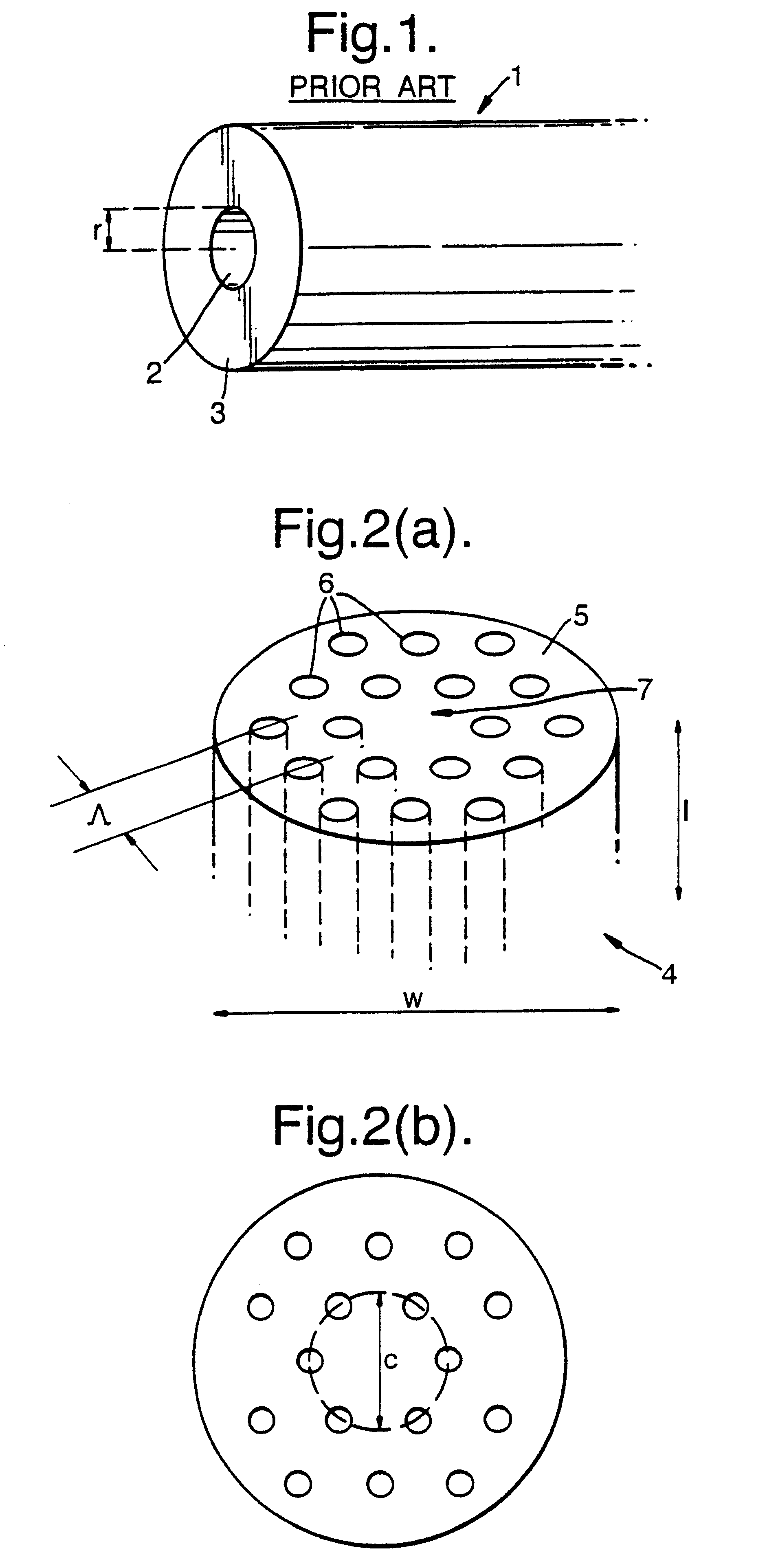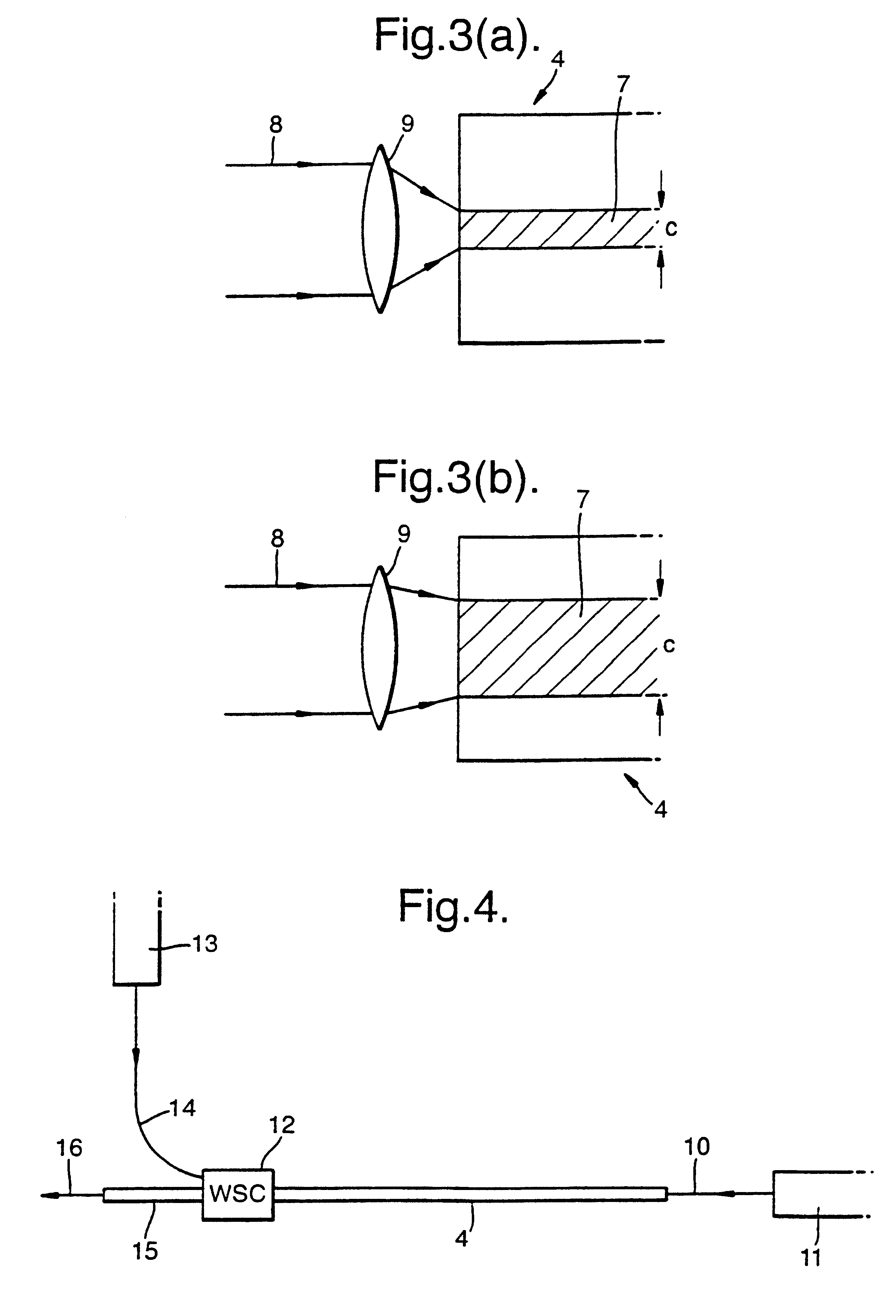Single mode optical fiber
a single-mode optical fiber and optical fiber technology, applied in the field of single-mode optical fibers, can solve the problems of limiting the amount of light that can be carried by known optical fibers at a given time, affecting the quality of optical signals,
- Summary
- Abstract
- Description
- Claims
- Application Information
AI Technical Summary
Benefits of technology
Problems solved by technology
Method used
Image
Examples
Embodiment Construction
Referring to FIG. 1, a conventional step index fibre 1 comprises a circular core 2 of uniform refractive index n.sub.1 and radius r surrounded by a cladding material 3 of unlimber refractive index n2. The number of guided modes the step index fibre 1 supports for light of wavelength .lambda. is determined by the V-value, where V is given by; ##EQU1##
The step index fibre is single mode only if V is less than 2.405. Hence, conventional single mode step index fibres are typically operated so that V is a little less than 2.405.
Note: The threshold level V for multi mode propagation in large core photonic crystal fibres is different to the threshold value for conventional single mode step index fibres. In practice the threshold level for multi mode propagation in a large core photonic crystal fibre is somewhat higher an the value for a conventional single mode step index fibre.
In a conventional step index optical fibre, such as that shown in FIG. 1, the material from which the fibre is ma...
PUM
| Property | Measurement | Unit |
|---|---|---|
| diameter | aaaaa | aaaaa |
| core diameter | aaaaa | aaaaa |
| core diameter | aaaaa | aaaaa |
Abstract
Description
Claims
Application Information
 Login to View More
Login to View More - R&D
- Intellectual Property
- Life Sciences
- Materials
- Tech Scout
- Unparalleled Data Quality
- Higher Quality Content
- 60% Fewer Hallucinations
Browse by: Latest US Patents, China's latest patents, Technical Efficacy Thesaurus, Application Domain, Technology Topic, Popular Technical Reports.
© 2025 PatSnap. All rights reserved.Legal|Privacy policy|Modern Slavery Act Transparency Statement|Sitemap|About US| Contact US: help@patsnap.com



